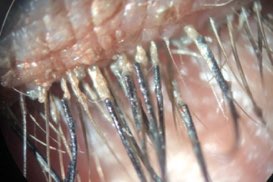The Procedures
The excimer laser is a computer driven laser which uses a cool beam of invisible light to precisely reshape your cornea. It does so by removing a small amount of tissue to recontour the cornea. Usually the amount of tissue that is removed in order to achieve the desired result is much less than the thickness of a human hair (approximately 125 microns thick). The excimer laser can remove tissue with up to 0.25 microns of accuracy. Excimer laser light does not penetrate the eye and leaves other eye structures (iris, lens, retina) undisturbed.
The procedure is carefully controlled by the surgeon and can be stopped at any time. The excimer laser is presently used for LASIK and advanced surface ablations (PRK and LASEK).
With PRK no creation of a cap or flap using a femtosecond laser is required. The excimer laser energy is applied directly to the cornea to sculpt, or reshape, it allowing images to fall directly onto the retina resulting in clearer vision. Most laser treatments take less than sixty seconds and the procedure is pain-free (because of the anesthetic eye drops used).
In LASEK the cornea’s surface cells are moved aside, the cornea is resculpted with the laser and the surface cells are gently put back in place. This is pain free because of the anesthetic eye drops used.

For LASIK, a femtosecond laser is used to make a protective cap or flap on the surface of the cornea. During this process you may feel a little pressure, but no pain is felt because of the anesthetic eye drops. The cap, which remains attached at a hinge, is then carefully lifted and the excimer laser is applied to the inner tissue of the cornea to precisely sculpt, or reshape, it resulting in clearer vision. The cap is then put back into place where it bonds securely without the need for stitches.

The excimer laser is a computer driven laser which has gone through many software upgrades over the past three decades. The evolution of refractive technology now affords people even better quality of vision, with fewer risks.
People with myopia, hyperopia, astigmatism and presbyopia, are excellent candidates for laser vision correction.
Laser vision correction underwent many years of data collection and clinical trials in order to receive FDA approval as being both safe and effective. The excimer laser itself, surface ablations and LASIK are all FDA approved.
Accommodating lens implants, and other premium intraocular lenses, are lenses surgically placed inside your eye after the removal of your natural cataractous lens. These lenses are intended to give people good distance and near vision as opposed to the lenses previously used which were designed to give people good distance vision (requiring reading glasses be worn for near tasks).
Intraocular (phakic) lenses (a.k.a. implantable contact lenses) were approved by the FDA in September 2004. These are plastic lenses that can be implanted into the eye (intraocular) to correct vision. This procedure carries higher risks than laser vision correction and is therefore typically reserved for people with high degrees of myopia or hyperopia.
Images courtesy of the AAO.








